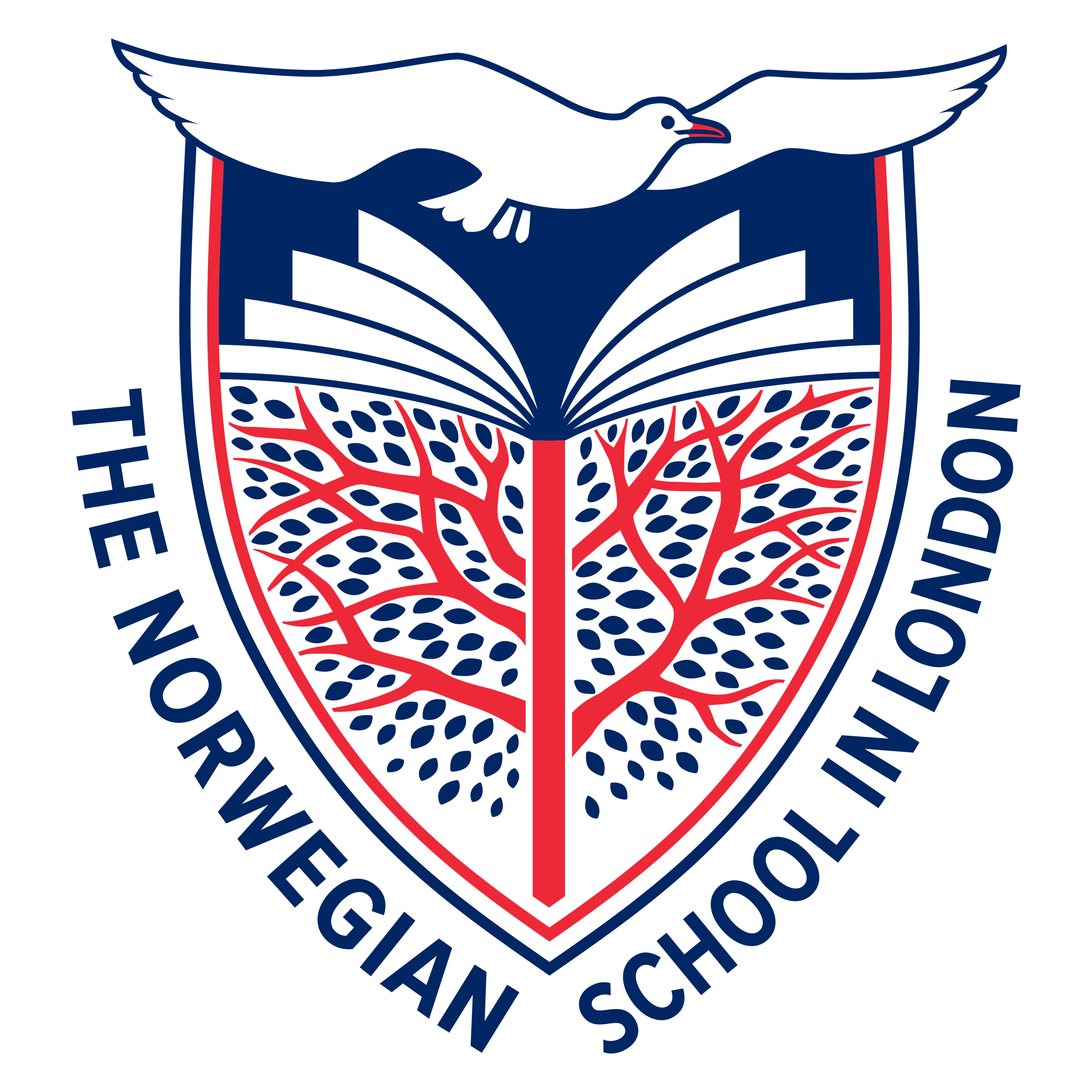Welcome to Year
1.- 4.
The first years of school are an exciting time for both the pupils and the teachers. It is important to the school that all pupils experience a safe and positive experience
when starting school. The school focuses on the whole pupil and works hard to ensure
that they have an opportunity to be happy, creative, work with practical tasks and enjoy being with other pupils. The school is proud of both the Norwegian and the British
values that it holds. We make sure that we keep Norwegian traditions by outside
learning so Year 1-2 has forest school once a week. This gives the pupils an opportunity to develop their motor skills, their social competence and is one of the best ways to learn about nature!
In addition to this Year 1-4 often go on trips into London. They visit museums, historical buildings and landmarks, enjoy boat trips on the River Thames and much more! One of the benefits of using London as an extension of the classroom is that the pupils are exposed to the English language and English culture
first-hand which gives them an authentic
learning experience. It’s exciting! You often hear us speak both English and Norwegian at break and lunch times.

Meet a pupil from Year 1.-4.
This is Milla. She attends the Norwegian School in London.
f.a.q.
information about year 1.-4.
How many teaching hours do they have each week?
Year1-4 has a total of 21.5 hours per week.
The school day starts at 08.45 am and ends at 2.30 pm. From Monday to Thursday there is an After School Club (SFO) from 2.30 to 4.30pm. There is also homework help club.
On Fridays, school ends at 14.30.
How is the teaching organised?
The school is a “fådelt” school. Year 1-2 are taught in the same class as are 3-4, but they follow the academic targets for their specific year. Each class has their own Class teacher.
Students are given a weekly schedule, which includes homework, every Monday. The schedule describes what they are working on in the core subjects that week, as well as any relevant information.
The school uses Office 365 and Skooler as the digital learning platforms. All information from the school to parents is through Skooler.
Parents are invited to attend a parent-teacher conference twice a year. This gives the pupils a chance to talk about school progress, both academically and socially, with their class teacher and parents. This is one of the ways that the school makes sure the pupils are closely supported.
How do we work in year 1.-2. ?
Year 1-2 work together in most subjects but are split for most Maths and Norwegian lessons.
There are often two teachers present in lessons which allows for a significant degree of adapted teaching.
Once a week 1-2 have trip day which is often used for forest school.
How do we work in year 3.-4.?
Year 3-4 are taught in the same classroom, but they follow the academic targets for their specific year.
There are often two teachers present for Maths and Norwegian lessons which allows for a large degree of adapted teaching.
How do we work across the cohorts?
There are three cross curricular topics with which we work across year groups throughout the year.
We want to develop the pupil’s creativity and curiosity through culture, literature, engagement and practical tasks.
We work with these topics in class as well as across other year groups, sometimes as a whole school.
How is English taught at our school?
The pupils in Year 1-4 have 2.5 hours of English a week which is more than the average in Norway. We aim to have a native English-speaking teacher as well as a Norwegian speaking teacher in the lessons. This helps to support the pupils in their learning no matter what their experience of English.
The focus for Year 1 is to introduce the pupils to the language. Oral activities including rhymes, songs, games and music are the main tools of teaching.
Reading in English is introduced in Year 2. The school uses “The Oxford Reading Tree” which is a graded reading scheme.
In Year 3 the pupils continue using “The Oxford Reading Tree” to develop their reading skills. The aim is that by the end of Year 3 the pupils should be able to read English literature appropriate for their age-group.
Writing skills continue to develop in Year 3-4. The aim is for the pupils to be able to compose simple texts.
In Year 4 the pupils are challenged to look at the content of what they are writing. There are weekly spelling tests in English in both years to help establish a sound vocabulary and accuracy of basic words. Pupils in year 3-4 also have the opportunity to take the Cambridge ESOL, YLE / KET examinations but this is not compulsory. ( https://www.cambridgeenglish.org/ )
How often do we have excursions? What activities do we do?
We strive to benefit from the great diversity that London has to offer. We visit historic buildings, museums, art galleries, theatres and places of worship as part of our teaching.
